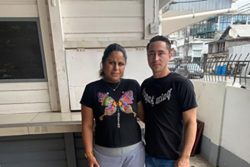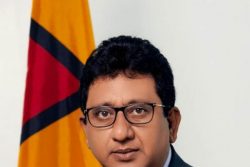 Comedy remains foremost among contemporary trends in theatre in the Caribbean. The popular play still dominates and concern for the box office end is the major influential factor keeping commercial theatre open. Yet, there are attempts at social relevance and artistic statements which account for some variety and a surviving persistent interest in formal traditions.
Comedy remains foremost among contemporary trends in theatre in the Caribbean. The popular play still dominates and concern for the box office end is the major influential factor keeping commercial theatre open. Yet, there are attempts at social relevance and artistic statements which account for some variety and a surviving persistent interest in formal traditions.
Of interest is that within the continued dominance of the popular and the comic, various different types have emerged. Some of these have been ephemeral, including the fairly weak ones, while others have spread across countries, and some retain a very interesting component of indigenous content.
These trends across the West Indian islands are pertinent. In Trinidad and Tobago, stand-up comedy has held its own, but Raymond Choo Kong was dominant on the popular stage. It was mainly his productions that kept commercial theatre on the map, reflecting the demand for fast-moving, racy and hilarious comedies. It is to be seen who or what will replace him, or whether his departure leaves a gap.
Penelope Spencer remains prominent as a contributor to comic performance and satire. The demand for comedy in Trinidad remains faithful to the trends across the Caribbean, but there has not been a very strong current of indigenous input into the comic drama most frequently offered. Satirical performances retain local relevance in order to sustain popular viability, and there has been the type of satirical humour led by Paul Keens Douglas.
There has been little change in the trends in Antigua over a very long period. This stretches back to the popular comedies of Nambalulu Nambalala, a leading personality on the local stage more than 25 years ago. The continuing demand for this type of theatre has been illustrated by, for example, visiting Guyanese productions to that island. The Theatre Company of Guyana has performed there. Productions by Guyanese Darren McAlmont have been the most recent examples to suggest that those local trends and the popular demand could accommodate imported or visiting productions.
The current trends had their origins in Jamaica. A very prominent development was farce and slapstick, but with a number of indigenous ingredients. There were emergences out of roots theatre and what was sometimes called dance hall plays. The raciness was a factor, but there was something more enduring. Companies were able to tour the countryside with plays that were popular for their low farce, and a lucrative export market developed. But an important sub-stratum can be found in the layers of the indigenous in the Roots Theatre.
There are numerous branches of this, including the very significant influences on major mainstream plays, the comedies and the works of major playwrights – most notably, Patrick Brown and Basil Dawkins. But most of these will not be discussed here. The farce and slapstick elements are the main things that make Roots Theatre very popular, and, in fact, are elements most condemned by critics of these plays and of popular drama generally. However, it is to be noted that some components of these have interesting traditional roots and are significant formal elements in the contemporary popular comedies.
This is audience-oriented entertainment. The roots, the grassroots, the comic and the audience appeal make very interesting study. One factor that stands out is the earthiness of the Roots Theatre plays, while another is their audience appeal. Performers engage the audience directly, and audience members take them on. There is ‘talk back’ and there is audience interaction; there are intervals in which actors invite dialogue with the audience. Generally, these add to the performance text with clearly unscripted material, a good deal of improvisation and ad lib, which all accompany hilarious banter.
A master at this is Oliver Samuels, and an example is his own River Bottom. We have seen it incorporated in such high-calibre plays as Patrick Brown’s Love Games. Even outside of that are the particular antics of actors playing to the audience in comic performance, and one performer well known for this is Shabada. Such performances actually account for his extraordinary popularity and may be found in plays such as Bashment Granny and Get Outt!
These factors add to the length of the performances. Moments – particularly very funny moments with high potential for low farce – are extensively exploited, so that audiences will go away feeling that they had their money’s worth.
Crucial elements in Guyanese trends have most recently included the return of “The Link Show”, while two very pertinent factors remain. These are farce and stand-up comedy. What has been happening in Guyana is well demonstrated by the highly popular “Uncensored”, which is stand-up comedy, and “Nothing To Laugh About”, both produced by the same company. In addition, one of the very interesting formal factors was again observed in the latest production of Michael James, brought out of Linden and performed at the National Cultural Centre in Georgetown.
Elements of Roots Theatre were first seen in the performances of an amateur group – the Conquerors from Parika. As a community group, their emphasis was on a pronounced rusticity, echoing the style and way of life of rural villagers. This style in Guyana has been mistaken for untidiness and lack of polish by amateur dramatists.
It was next noted in another group from outside of Georgetown, the capital of cultured and well directed performers. It was a particularly pronounced feature of the farce Pleasing Mrs Jones by James of Linden. Here, there was a similar judgment that this was the work of unaccomplished amateurs.
Then, to take things further, an experienced commercial dramatist, Godfrey Naughton, employed some of the same rustic techniques in his production of another Michael James play, Skin Teeth Na Laugh.
We have now seen it again, repeated unapologetically by James himself, in yet another of his farces – Mommy Baby, Daddy Maybe – staged at the National Cultural Centre in George-town, with his group of players from Linden. By now, however, there is no mistaking the deliberate style of playing that James and his group adopt. It is the distinguishable influence of the Roots Play.
Jamaican Roots Theatre has visited and has been performed in Guyana. It is not likely that James and the Lindeners have studied it, but their style reflects the influence and would have derived from similar origins.
Mommy Baby, Daddy Maybe cannot be described as exquisitely crafted or highly polished as a production. It had many ragged edges, lengthy blackouts between scenes, and the actors continuously disregarded the boundaries demarcated on the stage, so they were always walking through walls and confusing even the imaginary entrances and exits. There were many popular songs played from recordings during the action, and while it was recognised that this was a deliberate ploy, this music often interrupted the pace and fluency, slowing the play down. A play whose plot was as simple as this one, may be regarded as excessively lengthy when it was as stretched out as it was. It was all of four hours long.
However, much of this may be accounted for by the play’s chosen style. James himself and some of his cast are accustomed to it. Veteran actor Adolph Christian is a very good example. He is a known comic actor who well understands farce and audience driven drama. In this play he is joined by Ivelaw Campbell, performing in drag as “Granny” in the noted tradition of the hilarious “Dame”.
Definitely there were many of the roots tactics of exploiting every possible moment of humour, which surely prolonged the playing time. Popular songs were sometimes actually sung by the characters as in a musical. This provided the feel of a parody, another roots characteristic. The singing also contributed to the feel of a romantic comedy and a melodrama, all enhancing the parody.
Most of the cast executed the required style of acting, which demanded character types, caricatures, and exaggerated camp. Other members of the cast included Randy Gonsalves, Lauretta Williams, Roshana Fraser, Brianna Harry, Joanna Profit, Allister Fraser, Randy Johnson, Leon Moseley, Lois Moseley, Romana D’Andrade, Jamacy Albert, and Denzil Chapman. Godfrey Naughton was technical director.








